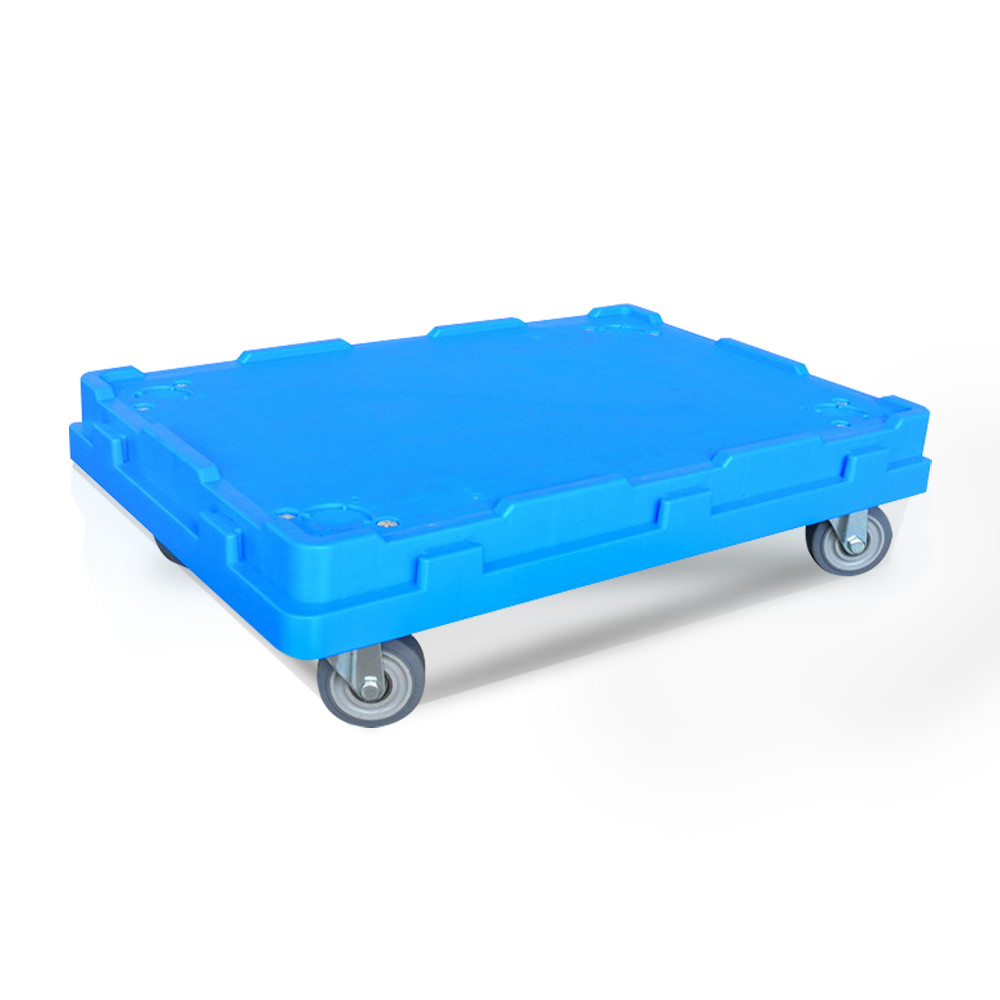Maintaining a plastic trolley in good condition ensures its longevity, optimal performance, and safety. The maintenance tasks typically required for plastic trolleys focus on keeping them clean, inspecting for wear or damage, and ensuring smooth operation. Here’s a comprehensive guide to the maintenance tasks needed to keep a plastic trolley in good condition:
Regular Cleaning
Cleaning Schedule:
Establish a regular cleaning schedule based on usage frequency and environmental conditions. For heavily used trolleys, this might be daily or weekly.
Clean the trolley immediately after use in environments where it may be exposed to dirt, dust, or chemicals.
Cleaning Procedure:
Use mild soap or detergent and water to clean the trolley thoroughly. Avoid abrasive cleaners or solvents that could damage the plastic.
Rinse the trolley with clean water to remove any soap residue.
Allow the trolley to air dry completely before storage or further use.
Inspection and Maintenance Checks
Visual Inspection:
Regularly inspect the entire trolley for signs of wear, damage, or degradation. Pay particular attention to load-bearing components such as the frame, shelves, and wheels.
Check for cracks, dents, or stress marks in the plastic, especially in areas that bear weight or undergo frequent use.
Wheel Maintenance:
Inspect the wheels or casters for smooth operation and signs of wear, such as flat spots, worn tread, or loose fittings.
Clean wheels regularly to remove debris that could impair movement or cause damage to floors.
Handle and Grip Check:
Ensure that handles, grips, or ergonomic features are intact and securely attached to the trolley. Repair or replace any damaged or loose components promptly.
Lubrication and Adjustment

Lubrication:
Apply lubricant to moving parts, such as wheel axles or caster bearings, as recommended by the manufacturer. This helps maintain smooth operation and prolongs component life.
Avoid over-lubricating, which can attract dirt and debris, causing operational issues.
Adjustment:
Periodically check and adjust components such as shelves, handles, or other attachments to ensure they are secure and aligned correctly.
Tighten bolts, screws, or fasteners as needed to prevent loosening over time.
Storage and Protection
Proper Storage:
Store the trolley in a clean, dry environment away from direct sunlight, extreme temperatures, or moisture.
Use protective covers or storage solutions to prevent dust accumulation and physical damage during storage.
User Training and Guidelines
User Education:
Educate users on proper handling and loading practices to prevent overloading, uneven weight distribution, or misuse that could damage the trolley.
Provide guidelines for safe operation, including weight limits, maneuvering techniques, and care instructions.
Periodic Maintenance
Scheduled Maintenance:
Implement a periodic maintenance schedule based on manufacturer recommendations or industry best practices.
Consider professional inspections or servicing for trolleys used in high-intensity environments or critical applications.
Documentation and Record-Keeping
Maintenance Records:
Maintain records of maintenance activities, inspections, repairs, and any issues identified during routine checks.
Use records to track the trolley's condition over time and identify patterns or areas for improvement.
By following these maintenance guidelines, users can ensure that plastic trolleys remain in good condition, prolonging their lifespan, maintaining operational efficiency, and promoting workplace safety. Regular care and attention help mitigate the risk of unexpected failures and ensure reliable performance in various industrial, commercial, or residential settings.












ZHEJIANG ZHENGJI PLASTIC INDUSTRY CO. ,LTD born in 1990’s is a professional manufacturer of plastic collapsible boxes, folding crates, storage bins, moving dolly and other plastic products items, etc.
 +0086-573-80886008
+0086-573-80886008Copyright © Zhejiang Zhengji Plastic Industry Co.,Ltd.All Rights Reserved.
